Fujifilm FinePix S3 Pro camera shown in this review and lens Nikon 50mm 1: 1.8D AF Nikkor (MKIII) Radozhiva was presented by Sergey Gordubey. From Evenkia (north of the Krasnoyarsk Territory) the parcel with the equipment went for more than a month. I express my deep gratitude to Sergey for such project assistance. Camera and lens were sold and funds credited here.
Fujifilm FinePix S3 Pro is legendary digital SLR camera, which was introduced back in 2004, but is still appreciated by many photographers to this day. The main strength of the camera is a special matrix - Fujifilm SuperCCD SR II, consisting of two types of photodiodes arranged in a special way and allowing to achieve a large dynamic range and excellent color reproduction. The very name of the matrix 'Fujifilm SuperCCD SR'already hints at dynamic range, where' SR 'is'Super dynamic Range '-' Super Dynamic Range '. How the SuperCCD SR matrix is arranged and functions can be viewed here.
Fujifilm SuperCCD technology was introduced in 1999 and has three generations: SuperCCD I, II, III. In 2003, with the release of the fourth generation of sensors, the technology branched out into SuperCCD HR (high resolution) and SuperCCD SR (high dynamic range). SuperCCD HR technology has survived to its eighth generation (counting from the beginning), while SuperCCD SR has only been updated to SuperCCD SR II once. In 2008 SuperCCD HR and SuperCCD SR technologies were merged and upgraded to SuperCCD EXR. In 2011, Fujifilm ditched the SuperCCD EXR with its special shape and sub-pixel arrangement. CMOS technology, with its conventional Bayer pattern, won, but the experiments did not end there - Fujifilm can still surprise with something unusual in our time :).
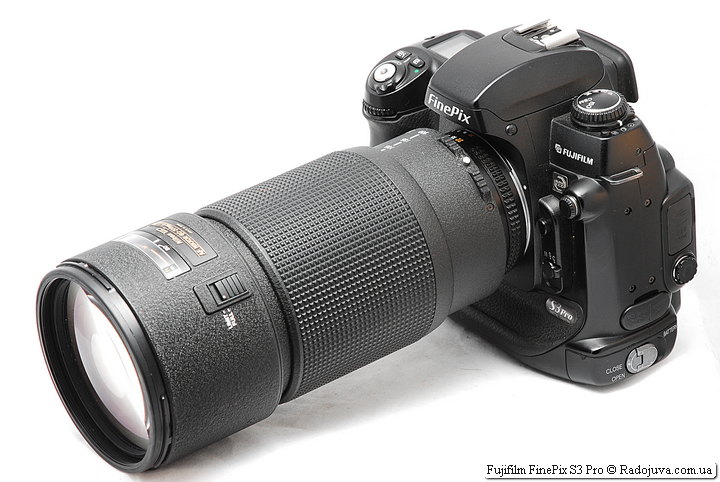
Fujifilm FinePix S3 Pro with lens Nikon ED AF Nikkor 80-200mm 1: 2.8D (MKII)
Below is the evolution of the Fujifilm FinePix CZK:
- Fujifilm FinePix S1 Pro - January 2000, based on the film Nikon F60 (aka Nikon N60), the first generation SuperCCD. Matrices for the Fujifilm FinePix 4700 Zoom and 4900 Zoom compacts were manufactured using the same technology.
- Fujifilm FinePix S2 Pro - January 2002, based on the film Nikon F80 (aka Nikon N80), SuperCCD III (the matrix third generation) Fujifilm F601 Zoom, S602 Zoom, and M603 compact matrices were manufactured using the same technology.
- Fujifilm FinePix S3 Pro - February 2004, based Fujifilm FinePix S2 ProSuperCCD SR II matrix (second generation SR matrix)
- Fujifilm FinePix S3 Pro UVIR - August 2006, upgraded Fujifilm FinePix S3 Pro for shooting in IR (Infra Red) and UV (Ultra Violet) spectra.
- Fujifilm FinePix S5 Pro - September 2006, based Nikon D200, a slightly upgraded SuperCCD SR II matrix (similar to the one installed on the Fujifilm FinePix S3 Pro).
- Fujifilm FinePix IS Pro - June 2007, Revamped Fujifilm FinePix S5 Pro for shooting in IR (Infra Red) and UV (Ultra Violet) spectra.
Yes, that's right, there is no intermediate model between S3 Pro and S5 Pro because in the east they do not like the number 4. All Fujifilm FinePix SLR cameras have an APS-C type sensor with crop factor 1.5 X, and are analogues of cameras Nikon DX.
Fujifilm FinePix SLR cameras have omitted the use of first-generation SuperCCD SR arrays, which were used by the Fujifilm F700, F710 and S20 Pro compacts. And also missed the second generation SuperCCD, which were the Fujifilm Finepix 6800 Zoom and 6900 Zoom.
All Fujifilm FinePix SLR cameras were built on the basis of Nikon DSLRs, both film and digital, and therefore have a Nikon F mount and are compatible with Nikon lenses and other add-ons (flashes, remote controls, boxes, etc.).
Until the first digital SLR camera Fujifilm FinePix S1 Pro Nikon and Fujifilm also collaborated and produced quasi full-format digital SLR cameras Nikon E / Fujifilm Fujix DS.
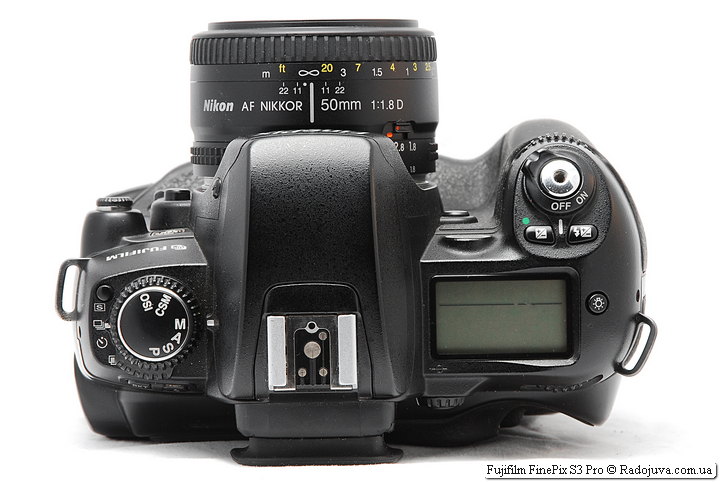
Fujifilm FinePix S3 Pro with lens Nikon 50mm 1: 1.8D AF Nikkor (MKIII)
Chassis S2 Pro and S3 Pro (from this review) is built on the basis of the Nikon F80 film SLR camera (for America it was produced under a different name - Nikon N80). A camera is built on the basis of the same camera. Nikon D100... In my opinion, due to the unfortunate main command dial with which ISO is selected and custom CSM functions, all of these three cameras are - S2 Pro, S3 Pro and D100 they have the worst control of all the digital cameras with Nikon mount I have ever used.
S3 Pro, like Nikon D100 and S2 Pro, uses a focus system Multi-cam 900 by 5 focus points, the center point is cruciform. Responsible for exposure 10-segment SPD sensor... The ISO range is small - from 100 to 1600 units, you can select ISO values 100, 160, 200, 400, 800, 1600. Functions Auto ISO not on the camera. Minimum excerpt shutter - 1/4000 s, and excerpt sync with flash is 1/180 s. The camera is designed to use old flashes that work in automatic D-TTL mode. Modern flashes will not work with S3 Pro in TTL or I-TTL mode. And it’s also very inconvenient that the value excerpts and apertures are changed only by half-stops (step 0.5 EV).
Too bad Fujifilm FinePix S3 Pro does not support auto metering exposure with lenses without CPU contacts (i.e. manual).
The S3 Pro uses a small two-inch display and 235.000 dots. The display, by modern standards, is very weak and is more suitable for setting menu options. There are two additional monochrome displays for quick setup of some parameters.
Depending on the selected dynamic range mode, the S3 Pro can either shoot at 2.5 fps or around 1.5 (RAW), 1.1 (JPEG FINE), 1.0 (JPEG NORMAL) fps. The following is placed in the camera buffer:
- 12 frames in JPEG mode 12 MP Fine in standard dynamic range mode
- 7 frames in RAW mode in standard dynamic range mode
- 9-10 frames in JPEG 12 MP Fine mode in high dynamic range mode
- 3 frames RAW HDR
It's important: Memory card writing speed CF is about 2 MB/second, and recording one photo in RAW WIDE quality is about 12 seconds. This applies even to very fast memory cards.
It's important: memory cards CF those larger than 4 GB take a very long time to format and initialize with the camera. Optimal use of cards CF 4 GB or less (recommended by the instructions). In this case, memory cards of 8, 16, 32 GB can use the entire memory capacity, but there may be a very long delay after turning on the camera, which is spent on initializing the memory card (can be minutes).
It's important: The camera is best used with 'H' type XD memory cards. Such cards are only available in 512 MB, 1 GB, 2 GB (very rare). Marking 'H' indicates a high data write speed. With these memory cards, recording a single picture in RAW WIDE quality is about 5 seconds, and the recording speed is about 5 MB/s. At the same time, in the official characteristics of such cards, it indicates that the maximum write speed should be at the level of 4 MB / second. Slower XD cards like 'M' and 'M+' are slightly slower.
It's important: This camera does not work with Micro adapter SD -> XD.
VERY IMPORTANT: The image review functions Menu->IMAGE DISP.->ON and Menu->IMAGE DISP.->PREVIEW greatly reduce frame buffer and significantly slow down the recording of pictures on the memory card. It is recommended to use the Menu->IMAGE DISP.->OFF function.
It's important: when frame buffer completely filled and the camera cannot take the next shot, on the secondary monochrome display (above the main color display), the remaining frame counter changes its background to a dark background. As soon as the background becomes light again, you can take at least one more photo. This makes it easy to know when you can continue shooting, which is very important when shooting with 'WIDE' dynamic range in 'RAW' format (when the files weigh 25 MB, and wait for one frame to be recorded on the cards CF account for 12 seconds).
It's important: Frame buffer data is written faster when shooting is stopped. If shooting continues, each individual picture will take significantly longer to be recorded to the memory card. Most likely, the recording of already received frames from the frame buffer to the memory card slows down due to the distribution of processor power for processing each new frame.
I want to clarify that RAW files (.'RAF') use 14-bit color depth and recorded without compression (i.e. no data loss due to compression). RAW files are 25MB in 'WIDE' wide dynamic range mode and 12MB in standard dynamic range mode (only S-pixels are encoded). The camera takes pictures with a maximum size of 4256 X 2848 pixels (12.1 megapixels).
The S3 Pro has a Live View mode. Fujifilm is 3 years ahead of Nikon in Live View. The first cameras with Live View were Nikon D3 и D300presented simultaneously in August 2007. Fujifilm overtook Canon, which 40D and 1D Mark III with Live View function was presented in the same summer of 2007 (Canon EOS 20Da is not taken into account, because it is intended for specific work). True, the S3 Pro's Live View is a bit stripped down:
- Runs a maximum of 30 seconds. The timer with the remaining time is displayed.
- The picture is displayed only in black and white.
- Only manual focus is available.
- There is no quick button to enable Live View.
- While Live View is on, you cannot shoot. To release the shutter, you must exit the Live View mode.
- An increase in the central region of the image is available, but only twice.
- The 'Live View' in the camera is called 'Live Image'.
- There is no way to change the exposure value, only increase or decrease the brightness of the image displayed on the display is available.
- When Live View is turned on, the batteries run out quickly.
In general, such a Live View can be useful only in rare cases :)
Fujifilm FinePix S3 Pro and Fujifilm FinePix S5 Pro are two truly legendary DSLR cameras. Despite the fact that they have completely different body and controls, the quality of images from both cameras is very similar. Fujifilm claims that the S5 Pro uses a modified Fujifilm SuperCCD SR II sensor, but if you dig around the global web, you can say with certainty that the S5 Pro has only changed the low-pass filter, which is designed to combat moiré. In general, the thinner filter on the S3 Pro can make it easier to achieve sharper images than on the S5 Pro. Actually, because of this, many users like the image quality from ProTroyka more than from ProTroyka. On the other hand, there are a lot of opinions that the S5 Pro has a slightly nicer color, and a little less noise, since the S5 Pro, in addition to the updated low-pass filter, has also updated the signal processing hardware, which allowed expanding the ISO range by one notch. Personally, I would prefer to use the newer - S5 Pro.
The S5 Pro and S3 Pro are not the cameras that should be bought for high ISO settings - they are primarily interesting for their dynamic range and color reproduction, which are revealed in full force only at low ISO values. I am sure there will be many people in the comments to this review who would argue that the S3 Pro's high ISO noise pattern is very similar to film grain.
Below is a diagram with the evolution of Super CCD matrices:
Some useful observations on the S3 Pro:
- The camera loves well-charged batteries and rechargeable batteries and discharges them very quickly. Perhaps the charge level controller on the camera, which I visited in review, is old and does not quite correctly determine the charge.
- S3 Pro does not have a Russian-language menu.
- The camera uses a large full-frame mirror, which it inherited from S2 Proand the one from Nikon F80 (N80). The shutter sound is quite quiet and pleasant.
- The combo body is an indispensable thing when shooting in a vertical (portrait) position. Models S1 Pro and S2 Pro lack a duplicate shutter button in portrait position.
- The joystick does not have a central button.
- On the body of the S3 Pro are: USB 2.0, IEEE 1394 (Firewire), video output, DC-IN external power connector (for connecting AC-5VX AC adapter), remote control connector, PC Sync connector for studio flashes and a hole on the button shutter release for the old style shutter cable.
- I would like to have a more accurate automatic white balance, sometimes the camera 'guesses' it not quite right. This is a major flaw that has been substantially corrected in the newer camera. Fujifilm FinePix S5 Pro.
- The built-in flash always fires in D-TTL auto mode and cannot be used in other modes. As external flash I used SB-900, which works on the S3 Pro in any mode except I-TTL. In addition, the S3 Pro does not support high-speed sync.
- The S3 Pro has an auto focus assist lamp and a button to illuminate additional monochrome displays. It's funny, but one monochrome display has a green backlight, and the other is orange.
- Shooting/Drive mode switch lever (Standard, Burst, Self-timer, multiple exposure) has a lock button to prevent accidental shift.
- There is also a button for previewing the depth of field. It cannot be programmed for any other function.
On the S3 Pro, you can choose from two film simulation modes: F1 for soft tones, which is great for portraits, and F2 for rich shots, which is great for landscapes and other shooting where vivid color and contrast are required. Unlike F1, F2, in normal STD (standard mode), you can separately adjust the gradations of dynamic range, color saturation, contrast amount, and sharpness for pictures.
UPDATE 1
Fujifilm FinePix S3 Pro+ Nikon AF Nikkor 85mm 1: 1.4D.
Source RAW (WIDE 2) and JPEG (FINE, 12 M, WIDE 2) can be viewed and/or downloaded here (Google Drive Gallery).
Source JPEGs (FINE, 6 M, WIDE 2) per lens Nikon 50mm 1: 1.8D AF Nikkor (MKIII) can be viewed and/or downloaded here (Google Drive Gallery).
UPDATE 2
Examples of photos on HELIOS-44M 2/58 and camera Fujifilm FinePix S3 Pro with readers of Radozhiva shared by photographer Alexander Gvozd.
UPDATE 3
My photo examples Carl Zeiss Planar 1,4/50 ZF.2 T* and a Fujifilm FinePix S3 Pro camera, made according to the method Zero JPEG, can download/view here (Google Drive gallery, 60 photos).
UPDATE 4
All sample photos in the gallery below were obtained by the rules ZERO JPE on the lens Sigma Zoom DC 18-250mm 1:3.5-6.3 DC MACRO OS HSM.
JPEG source files ('.jpg') can be download from this link (50+ photos, Google Drive gallery).
It's a shame that Fujifilm's SuperCCD SR technology has been abandoned. Only four SLR cameras are built on its basis: S3 Pro, S3 Pro UVIR, S5 Pro and IS Pro, in fact, with the same sensor. Similar matrices were also used on digital cameras Fujifilm F700, F710 and S20 Pro (the difference in the arrangement of R-pixels) It is impossible to even imagine what would happen to image quality if this technology were finalized, for example, applied to the manufacture of a full-format camera. By the way, if we take synthetic tests, then modern not cheap the Nikon D4s camera, introduced in February 2014, loses in dynamic range to the ancient 'wooden' Fujifilm FinePix S3 Pro, introduced back in 2004 (confirmation link). But 10 years have passed! But I'm glad Fujifilm is one of the few companies that is trying to update the matrix paradigm with conventional Bayer patternlaunching their X-Pro1, X-T1, X-E1, X-E2, X-M1 mirrorless cameras with X-Trans CMOS sensor.
RAW / RAF Conversion, HYPER UTILITY HS-V3
Render original RAW files (with '.RAF' resolution) is best done with the old original utility Fuji Hyper-Utility HS-V3... For the best quality, you should configure the converter like this. On modern operating systems, this converter may not work, or it will require many tricks to install it. The repackaged version (everything superfluous has been cut out) optimized for working with Windows 7/8/10/11 can be download from this link... Your use of the Fujifilm Hyper Utility HS-V3 remains entirely at your own risk.
Also, Adobe Lightroom and Adobe Camera Raw (a built-in plugin in Adobe Photoshop) allow you to work well with Fujifilm FinePix S3 Pro RAW files. In my opinion, if there is a desire to use third-party RAW converters, then it is best to use Fuji Hyper-Utility HS-V3 to convert source RAW files (with '.RAF' resolution) to TIFF format with 16-bit color depth ( the output should be files of 70-75 megabytes each), and later TIFF files are already processed by third-party converters, such as Capture One, Lightroom and any others. The TIFF format allows you to save the correct color reproduction (which third-party converters cannot provide), a resolution of 12 MP and a data reserve for easy manipulation with source files.
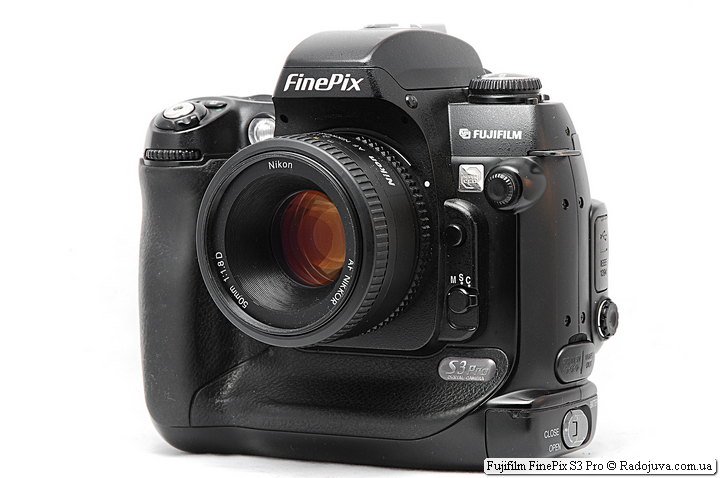
Fujifilm FinePix S3 Pro with lens Nikon 50mm 1: 1.8D AF Nikkor (MKIII)
Results
Nowadays, the Fujifilm FinePix S3 Pro is considered a morally obsolete camera. But many true artists photographers appreciate it to this day because of the unique sensor with a large dynamic range and pleasant color reproduction. This is one of the few cameras with which you can immediately get a wonderful result when shooting in JPEG format, without long dances with a tambourine over the conversion and processing of RAW files. For leisurely creative shooting, especially for portrait shooting - S3 Pro is a real find, especially since it is very cheap. Indeed, newer Fujifilm FinePix S5 Pro in almost every way better than its predecessor.
Comments on this post do not require registration. Anyone can leave a comment. Many different photographic equipment can be found on AliExpress.
Material prepared Arkady Shapoval. Training/Consultations | Youtube | Facebook | Instagram | Twitter | Telegram

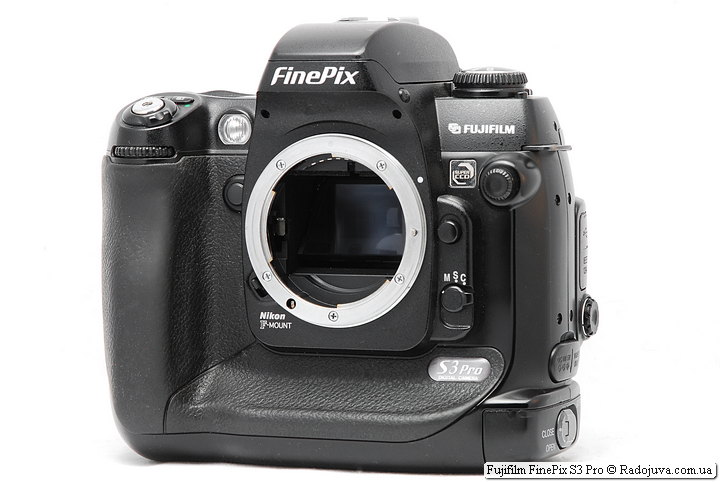
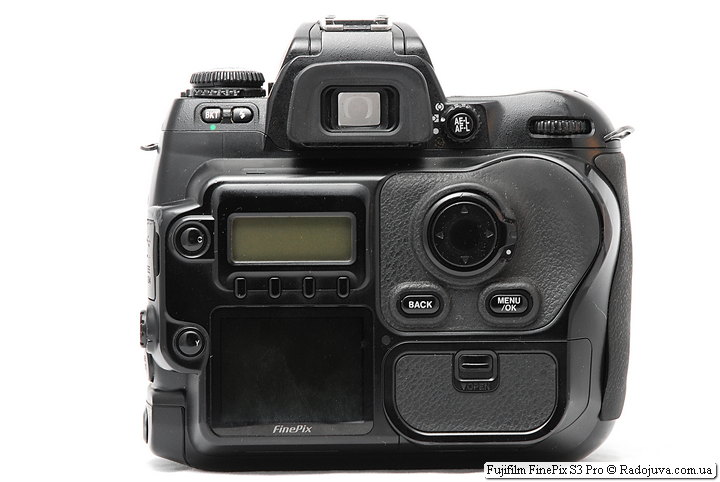
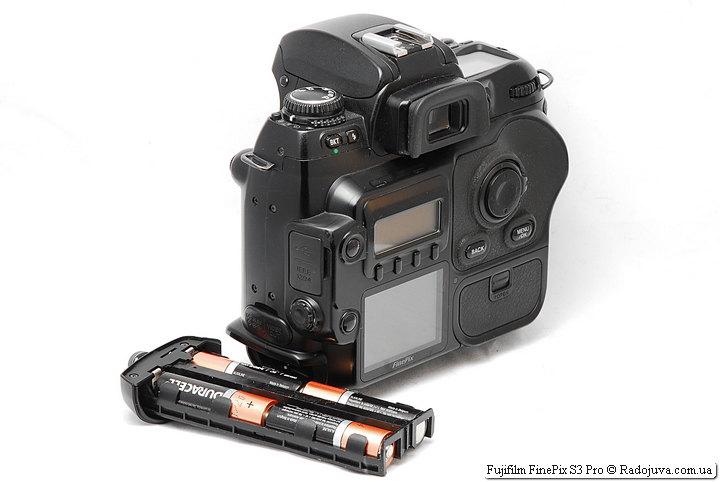
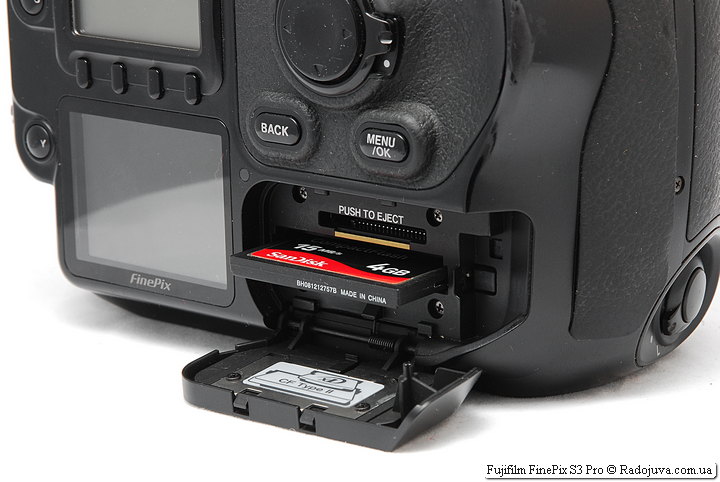




























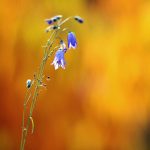
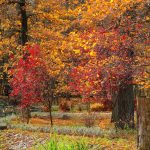

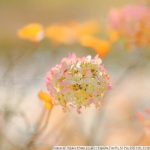
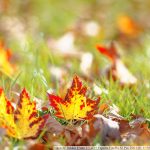



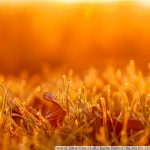


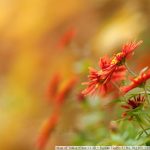

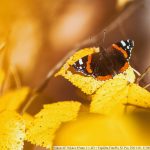


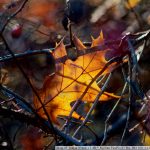
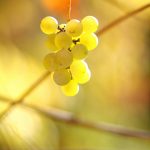





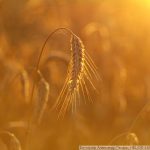







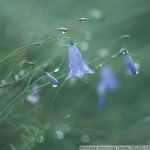

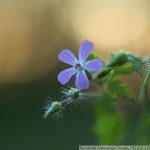


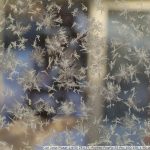




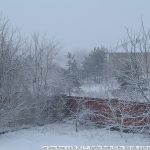
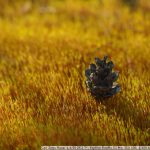




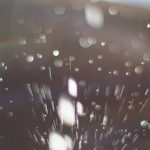
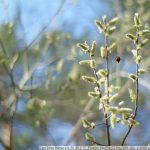
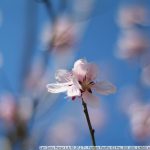
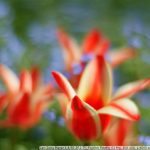


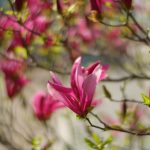





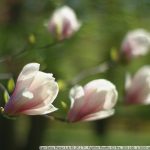
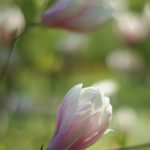
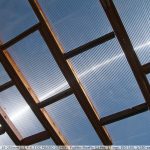
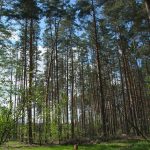


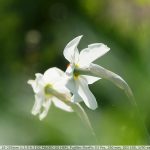


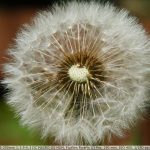




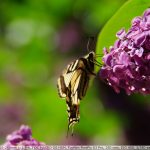
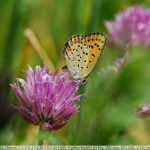

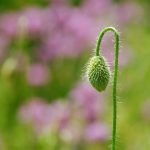





I repeat, I was a Nikon fan for a long time, but I refused to shoot Nikon on the S5. Because to get a normal skin tone on modern Nikon is always tinkering with the editor. And from modern DSLRs, sadly, Canon lays down Nikon's color on his shoulder blades (he did a bunch of “blind tests” in the sample of photos he liked, Canon almost always liked him more). If it were not for Fuja S5, he would have sold his entire fleet of optics long ago and switched to Canon. I like the Canon shots after revision even better than Fuji. Regarding mirrorless cameras ... The detail is certainly higher than the S5, S3, but the color, even if the crack is not the same! Otherwise the fujivods would have already switched to them, including me. Until then, S5, S3 has the best JPEG in the World!
Something prevents the bad dancer, but the camera is to blame.
Nikon has very good cameras, fast autofocus, DD, ISO and made better for Canon! The question cannot be raised which is better than Nikon or Canon. First for reportage. But the picture is definitely better in the second! When I was choosing a camera for myself, I read all sorts of tests and reviews, bought a D90 and for a while thought that this should be a beautiful color. But you can't fool your eyes ... You can cite the successful work of photographers from the same D90 or something else as an example, talk about dancers, but Nikon has now scored on color!
So let's write: Nikon D3300 is better for reporting than Canon 1Dx :) Well, the picture with the Canon 1200D is, of course, better than the Nikon D4s :)
When will people learn not to talk about brands in general, but about specific things?
Arkady, please add information. Similar matrices were installed by Fuji in 5000 series cameras, namely 5200 and 5600, (Fuji FinePix S5600 / Super CCD HR / as an example), as well as 6000 series (Fujifilm FinePix S6500fd / 6-megapixel Super CCD HR IV), 7000 series, as an example (Fuji FinePix S7000 / new 6.3 million pixel SuperCCD HR sensor can interpolate to a higher resolution - in this case 12.3 million pixels!) And finally 9000 series (Fuji FinePix S9500 / CCD) / SuperCCD 5th generation / So many cameras with similar matrices were released. However, these are no longer DSLRs
The review is about Super CCD SR with a large DD, but the HR series is already completely different.
read and doubts crept in. I use x 100. thought to take 3 pro for everyday shooting as an amateur and leave 100 x for the landscape. now I think - maybe a teleconverter for 50 ether is better
Dear Arkady. I have this camera in stock ... at one time I wanted to give you a test for the test))) somehow it did not work out ... and it is no longer necessary))) the review you made suits me perfectly. There is only one question: what specific flashes with D mode TTL will you advise? Specific models please list, but I got a little tired of the ancient manual Vivitar. They even say that old flashes on sync contacts have a lot of voltage, and they can burn out the camera's processor ... tell me if this is so, and which flashes can be safely used. Thanks in advance.
SB-28DX, SB-50DX, SB-80DX, all labeled 'DX'. Old ladies SB-600 and SB-800 also support D-TTL.
“… The camera loves well-charged batteries and accumulators and drains them very quickly.” Fuji (and the skill)))) for the "ProTreshka" has a "wonderful" external (from 220v) B / P, which solves the issue of powering the camera in studio conditions. Yes, slow, BUT! how much time is saved during processing ... It is not yet known who wins in the end ...
For the correct evaluation of these matrices, I highly recommend the native Nikon utility (NX, at least with index 2). Who sold - lost the standard of color purity.
Nikon Capture NX2
I have this utility ... eksif does not show ... I cannot recognize the shot ... I only need my own ... probably
http://www.dcphoto.ru/main.phtml#Nikon Now on sale in Russia with zero mileage. ($ 1850)
So you see the same in the viewfinder as the full-length Nikon D 700 camera for example?
But after all, there is a crop matrix on Fujik, it turns out that the visible picture is cropped by a matrix at the edges?
JVI see what you should see using the APS-C (Nikon DX) camera.
))) well! dreamed of a camera since its release ... but the opportunity to buy for money at that time was only a Fujifilm s5000, a zoom lens with a similar matrix. then there was a sony a100, albeit with ssd, but with such a narrow DD and bad noise, a dull color. a dream come true in 2012! the number of comments on this article and the huge topic on photo.ru kagbe hints that the camera is alive! I want to buy at least a carcass for the stock, while they are found in nature. incomparable quality of color and DD in zhpeg !!! depressing only errors of bb and measurement. low rate of fire makes you think when framing. bright sunny days are her strong point! in such conditions, he did not even try to pull the Sony a100 / DSLR out of his bag, for he foresaw gaps in the shadows and lights. everything is at a glance! It feels like the DD is higher than the human eye, which sometimes causes a feeling of compression on home monitors. bought tenpa 1,36 it became better about sighting. there are simply no words about the convenience of holding in the hand ... I want to throw the second mark out of my hand, the feeling that I took a rough brick in my hands, instead of a woman's breast !!!!!!!!!!!! a camera that doesn't need a strap! with a compact lens I just carry it in my hand, it just gets stuck and does not come off, the rubber bands are swollen, I need to re-stick it ... I LOVE this camera !!!
"Fujifilm FinePix S2 Pro - January 2002, based on Nikon F80 film"
- but the review itself indicates that it is based on the D100. I know that the D100 is built on the basis of the F80, well, how should I bring it to a common denominator :)
”Before showing
next image image. " - the word "image" is duplicated
Fixed
In the S2 pro review, it is not indicated anywhere that it is based on the d100.
In my commentary on the Fujifilm S5 Pro camera review, I briefly touched on the Fujifilm S3 Pro model. The main advantages and disadvantages of these cameras are well known. Their strong point is accurate, natural color reproduction under any shooting conditions, a harmonious combination of brightness, saturation, tonality and contrast. It doesn’t make much sense for the photographer to delve into the technical and technological aspects of creating digital images, the end result is important, what the human eye sees. The photos you can get with Fujifilm S3 Pro are of very good quality. Photos of most modern digital cameras, unfortunately, require refinement, especially with regard to color correction and errors in white balance. In this regard, the old Fujifilm SLRs are a cut above the competition. The above does not mean at all that the pictures with the Fujifilm S3 Pro should not be processed, just the processing here is needed more to enhance the positive effect than to fix the obvious technical errors of the camera. The mistakes of the photographer himself do not count.
To say that this camera does not suit either a portrait painter or a landscape painter is, in my opinion, an obvious lie. The portrait painter in the studio has a lot of time to work with focus, and a self-respecting landscape painter probably has at least one high-quality fast lens that will reveal all the capabilities of the camera’s sensor when shooting a landscape. The resolution of the device is quite sufficient for shooting portraits and landscapes. About 10 megapixels, not 6 at all, as some commentators write (formally, the resolution is 12 megapixels). With a strong desire, 10 megapixels can easily be up to 12-15 megapixels in programs such as PhotoZoom Pro without sacrificing quality. Another question is whether this should be done. Resolution does not affect the artistic component of the frame.
In fairness, I must say that due to the low rate of fire and the slow recording of files on a memory card, sports and reporting will be difficult to remove using the Fujifilm S3 Pro. The camera is best suited for unhurried work in the studio and outdoors, as well as photographing interiors, works of art, all that require particularly accurate transmission of colors and shades.
The Fujifilm S3 Pro camera in most cases achieves better sharpness than the Fujifilm S5 Pro, and this is its advantage. When processing images in the native editor from the HU-3, sharpness can be noticeably improved depending on the software settings. Unlike the Fujifilm S5 Pro, the Fujifilm S3 Pro camera has a much more convenient and simple menu. The Fujifilm S5 Pro is one of the most difficult cameras to operate. This is a significant drawback. Now I use both models (S3 Pro and S5 Pro), but Fujifilm S3 Pro is the best camera in terms of the sum of all characteristics, as well as the subjective feelings that arise when working with this photographic equipment. Its main advantage is a consistently high quality of images. The main disadvantage is power consumption.
I am enclosing three photographs. The first one is made by Fujifilm S3 Pro in total darkness with a built-in flash. The LED flashlight helped to focus the camera. The second shot was taken by Fujifilm S3 Pro at twilight without flash, at full aperture, ISO 200 units. Interior shot taken with Fujifilm S5 Pro camera with external flash. I was unsatisfied with the softness of the image, but the customer liked it. Everything is very subjective here. In some situations, I myself like this softness and watercolor. Then I take the S5 Pro with me.
So many words and such weak examples.
Of course, these are not masterpieces, although I try to prevent an open marriage. I can only say that the colors and shades transmitted by the camera are very reliable. There is little noise and it does not irritate the eye. Quality inevitably suffered as a result of compression of the original files to the required size (1MB). Initially, the pictures were taken in Jpeg format and were not processed by the user. Decreased only resolution.
What saturated colors!
What greens, what skin tone, super!
I appreciate your light irony, but I suppose you have not seen the classics of the genre (without the quotes, the classics). Please, Roerich Nicholas Konstantinovich "Watch of the Himalayas" 1925, filmed in a museum with a Fujifilm S2 Pro camera, not by me. The file is attached.
The second picture
Nice shot….
The third shot was taken with a Fujifilm S5 Pro camera. It is difficult to obtain high sharpness here, but in general the image is clear, there is no obvious blur of the frame. In my opinion, these are the features of the sensor, possibly intra-chamber algorithms and a filter.
Filmed in the top three for a total of year 3. I bought it after Nikon d40 and D70. Delight knew no bounds !!! Took about a year and a half and wanted to change the camera. Well, there is no 12mp or 10 and even 8. Camera resolution honest 6 megapixels. And the batteries simply gobble up, especially self-discharge of batteries. I took it on a hike, after a few days you insert the batteries, and they are barely alive. I don’t have a soul for Canon (I took it off), I can’t buy a full frame yet, in general I was led by Pentax K-10. I couldn’t resist the poet’s soul, after a while I sold the hated Pentax and bought Fuji s3 pro again and again there was no limit to happiness! Another year and a half passed, and again evil thoughts climbed into my head. All the same 6 megapixel detail and power consumption. But I basically shoot landscapes. I sold the fuji, bought the D3100, then on the D80, then d200.Wdtn with CCD definitely like it more. With good lighting and after processing, the final result is poorly curable even between the troika and the D3100. On D80 and D200 With good light, the color is generally wonderful, but yellow
prvvda yellow rushing. But if the lighting conditions are difficult, then the Fujik three rips everyone like a bob warmer. The colors on the D200 are beautiful, but they stretch even better from the Fujikovskoy ditch, and you cannot look at DD after the Fujik without tears. So I’m thinking about whether I can return to my beloved S3pro again. By the way, I don’t understand the general enthusiasm for Fufi mirrorless mirrors. In my opinion, the image from S3pro and S5PRO was more interesting
chamber jeep
even when not converted by a native converter, the ravas are very, very bad
Modestly said, a good color, it has an excellent color, I would say the only correct color, even, especially from modern analogs. Color from Fuji the film giant, what do techno guns Nikon and Canon know about color? Nothing, but people do not distinguish the color (shades), they don’t fucking need it, so Fuji, in order not to go bankrupt, abandoned her matrices, thinned the Bayer filter and became like everyone else! I am the proud owner of this dinosaur, although of course I would like to shoot with modern carcasses, but this is not destined to happen, unfortunately ...
I didn’t think that I would write somewhere. I am an old "consumerist". And I know how TSS differs from T-32. I just made a living. This is my profession. I learned this. 35 years ago, the "grandfathers" taught me how to set the world and respect my profession. Half of the reviews are nonsense full! Speed is needed when shooting sports, reporting and catching fleas! “Grandfathers” have already died, some in Israel or the States. There is no one to teach young people, probably this crap comes from here. They bought expensive cameras, put them on a serial and went to scribble. How many times have I observed such a picture, even when shooting static scenes. Previously, one frame of DC-4 film cost 1 Soviet ruble. If I brought teachers a wedding film with takes or repeating plots, my hands would be beaten off. One shot one kill. It's been talking about the “slowness” of S3 for so long! Previously, there was no zoom, only legs, and they held Ray 70 on the finger to the ceiling. Sorry old grumbler! With serial shooting, you can put the camera on a tripod and the circus monkey will press. Unfair reviews comparison! Today, the price is 200 bucks. And you need to compare in this price category. D 200 costs on Olkh one and a half times more expensive. And it’s not the fault of the three rubles that hits the quality of the picture boxes for thousands of bucks. Maybe they are faster, modern, etc., etc. n No focus setting? And so that there would be no backfocuses, do not put plastic lenses on the CAMERA! S3 bought by accident and on the first day I realized that it is forever! At the expense of ergonomics. Everyone’s hands are different, but I’m lying like a glove. No belt needed. Yes, the control disk is inconvenient, but also not to pull the ISO. Once set before shooting, because he knew where you were going. This is the first camera where I shoot with BB in the machine. At Nikonov, I had to adjust all the time if I were to shoot directly for printing. And here the BB also does not need to be pulled, so let there be no and no adjustments. And do not compare with brands 800kami and so on. There is a price qualification. Let's compare with the D3100, 3200,3300, no it is bent! 3300 is twice as expensive, although they only need to shoot zombies, their complexion is the same. Another error in the reviews. Neither ACR nor Fazvan see extended DD. Someone wrote, they say 6 megapixels, I bet, but even 6, stretches not only RAF, JPEG also stretches perfectly. Topaz parts can be pulled out if necessary. I'm sorry that a lot of words are not in essence. I believe that three rubles cannot be compared with anything! She's just ABOVE! For the owners of this camera, it put an end to the eternal dispute between the Nikonists and the canonists! Our brother was added, both on the one and the other. I wanted to change the three with only five, but stopped in time. No control amenities justify the soapy picture. Often in disputes about technology, we forget about the most important thing. I am not writing about the photo, about the quality of the picture now about the artistic component, but about the quality of the picture itself. If someone reads my senile mutterings, please think about how to adapt lithium-ion batteries to the top three. At one time, I switched D1x (by the way, the undeservedly forgotten camera will wipe the nose of most mirrors) by 18650 and did not know grief. Maybe there are electronic engineers on the forum, maybe from modeling? there are 6 volt batteries.
I absolutely agree with all that has been said. To the very point. I have less experience, but I still had time to tinker with the film, and from there the habit remained of one frame, one plot. I absolutely agree with the fact that the camera needs to be evaluated, first of all, from the generated image, and only then from the performance characteristics and a lot of novelties. That is why there was never a desire to part with his treshka.
PS: neither can I find an answer: are lenses with 3 and 8 contacts fully functional for S10 PRO, or something will not work. (e.g. Nikon DX AF-S Nikkor 18-200mm 1: 3.5-5.6G ED SWM VR IF Aspherical)
Nikon 55-300mm f / 4.5-5.6G ED DX VR AF-S. I use this lens. This means they support a camera without screwdrivers.
Alexey also agrees with you. Although I, in your category, seem to be from the “young”, but you are absolutely right, and especially there is a serial and high-speed filming. I don't understand why it is at all if you are not a sports reporter. By the way, Arkady in his reviews often also draws attention to this, so, they say, the camera shoots 10 fps - it means like a pro (I already wrote to him about this somewhere) - and then the Internet and social networks of super-photographers are forgotten by millions of dull and dull photos, so that you can probably make a video of them and start up at a speed of 15 fps. It's just that sometimes you have to deal with such people, and you can go crazy while you watch all these incompetent episodes, you want to kill ...
Well, the popovod Fujika C3 - I really want this camera, I probably will buy it as a second DSLR.
;))))))))))
Delighted…. I myself have been fond of photography since early childhood (for over 40 years…).
I read the opinions about Troika, compared it with ProPyatka - I decided to take Troika.
The only question is about the lenses - what would you advise to maximize all the possibilities (I understand that with 6 megapixels you will have to pull to the maximum ...).
Thanks in advance !
Absolutely accurate assessment - on the basis of professionalism ... My experience is a couple of decades older and you are all in the top ten ... There is nothing to compare the results - S3pro, neither in quality nor in pleasure (at the level of the best watering cans - including the last ...). I work in commerce and cannon stamps and modern nikons ...
good afternoon to all participants of the discussion! I am faced with a choice: a DSLR (fuji boo about 3 or 5, nikon - now I don’t understand which one, when thinking about fuji, everything has ceased to attract) OR a mirrorless fuji xe-2 …… ..
Tasks: a beautiful picture, in-depth study of photography, the possible sale of pictures in photo banks.
do you need a DSLR for sales…. is it possible to get by with the X-E2 taking into account a good lens already going to her in the whale ??
I would be extremely grateful for your comments….
For non-professionals, a mirrorless camera is better (everything without any special problems - here and now), but after a certain time you may feel the lack of capabilities of their lenses and, as a result, the limitation of opportunities for the growth of the photographer's qualifications ...
I’ll have to before the power is on, why will autofocus be performed on the “active” motor, for example, the AF-S Nikkor?